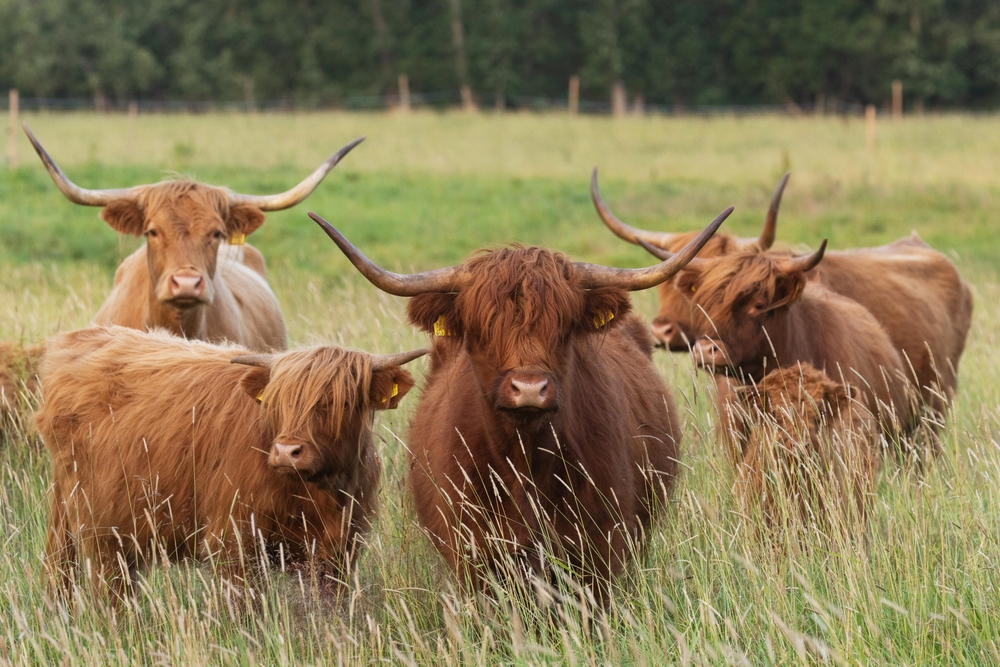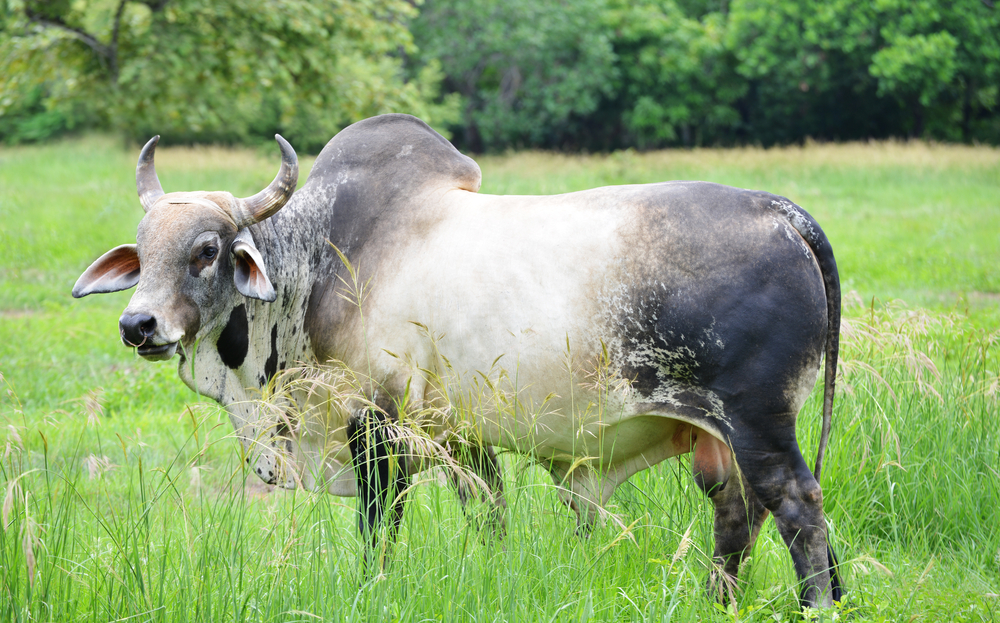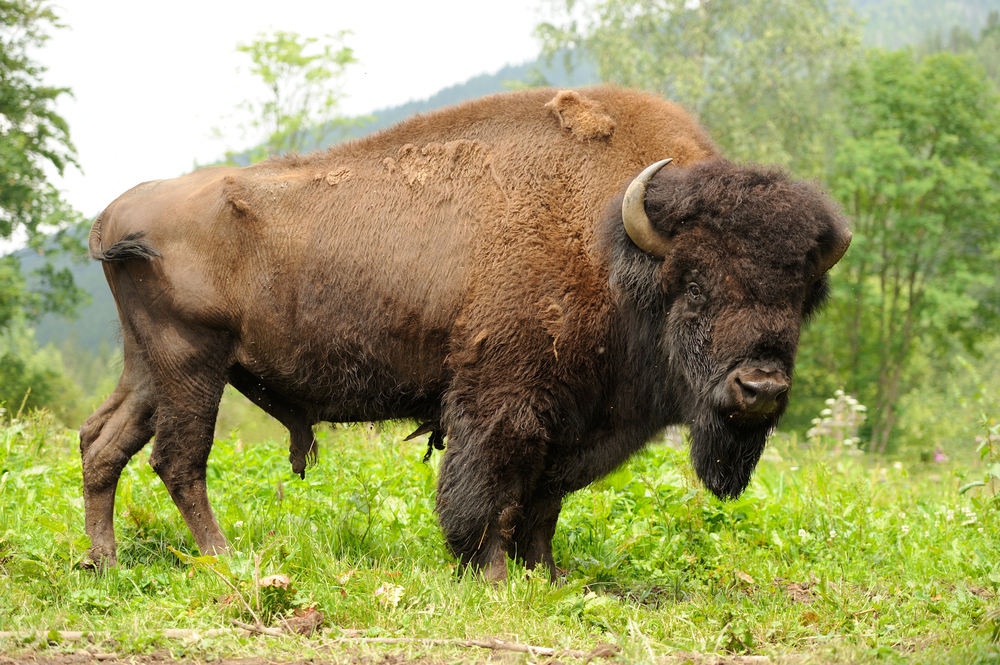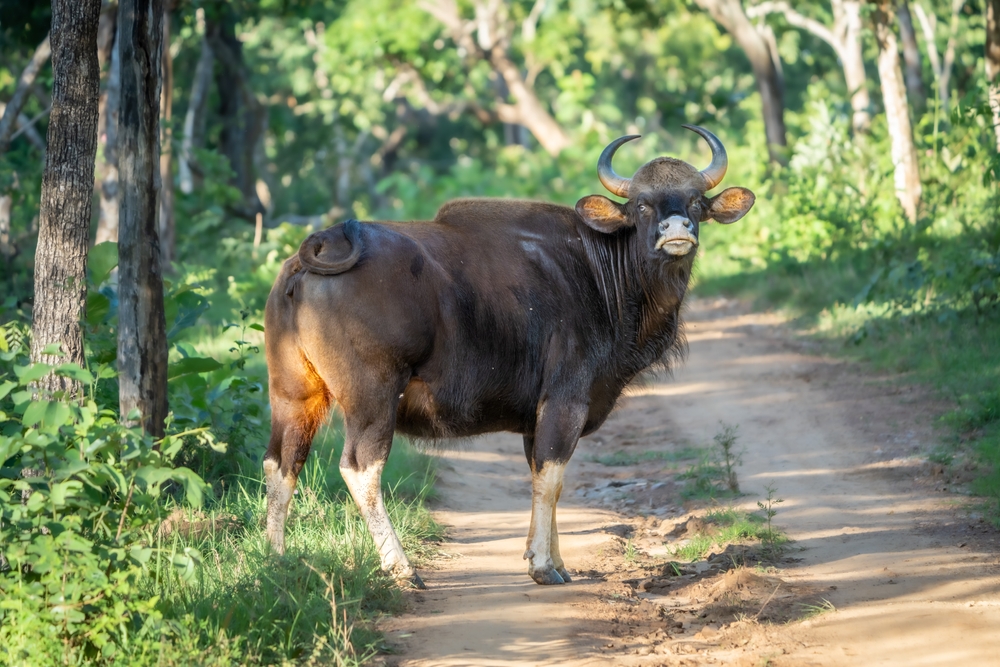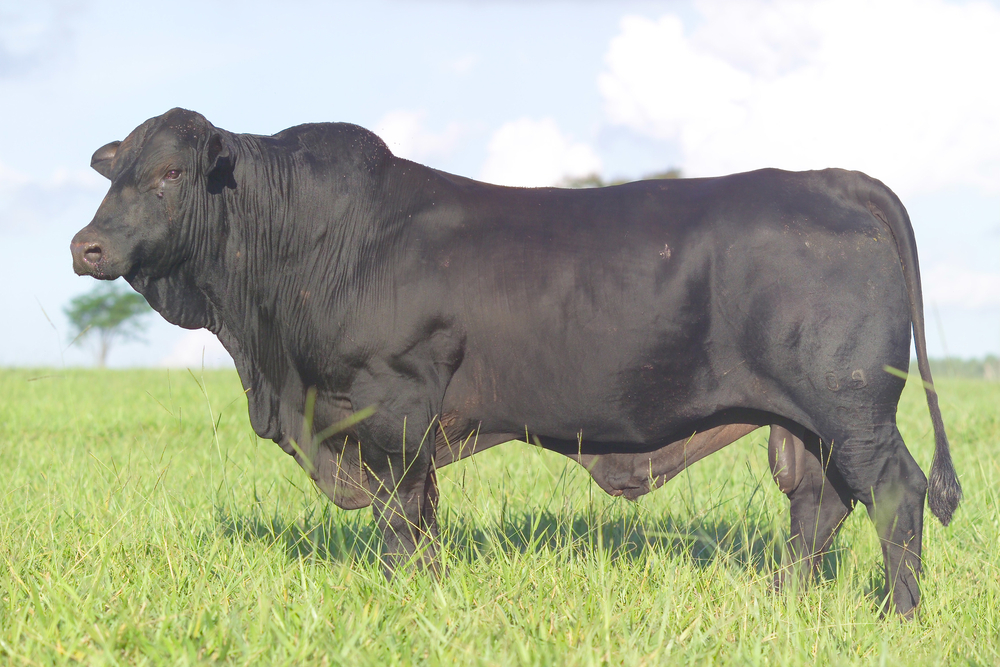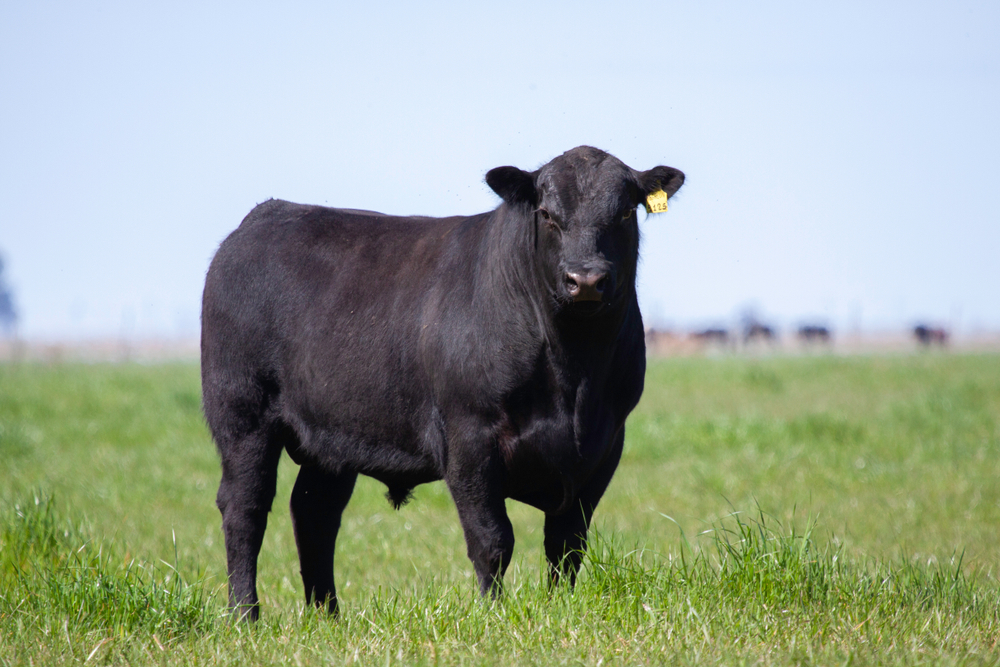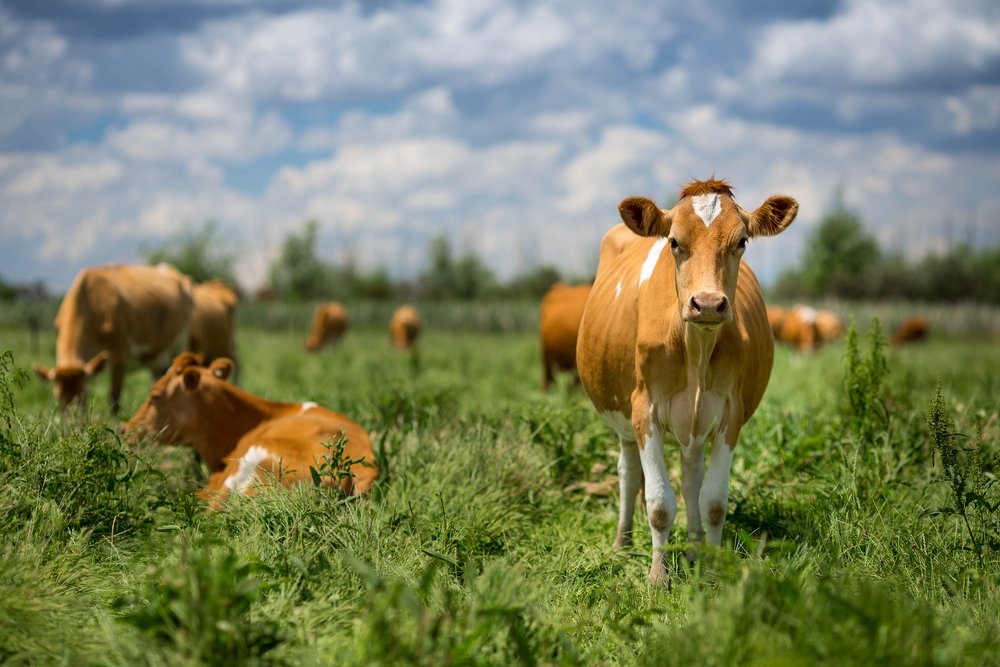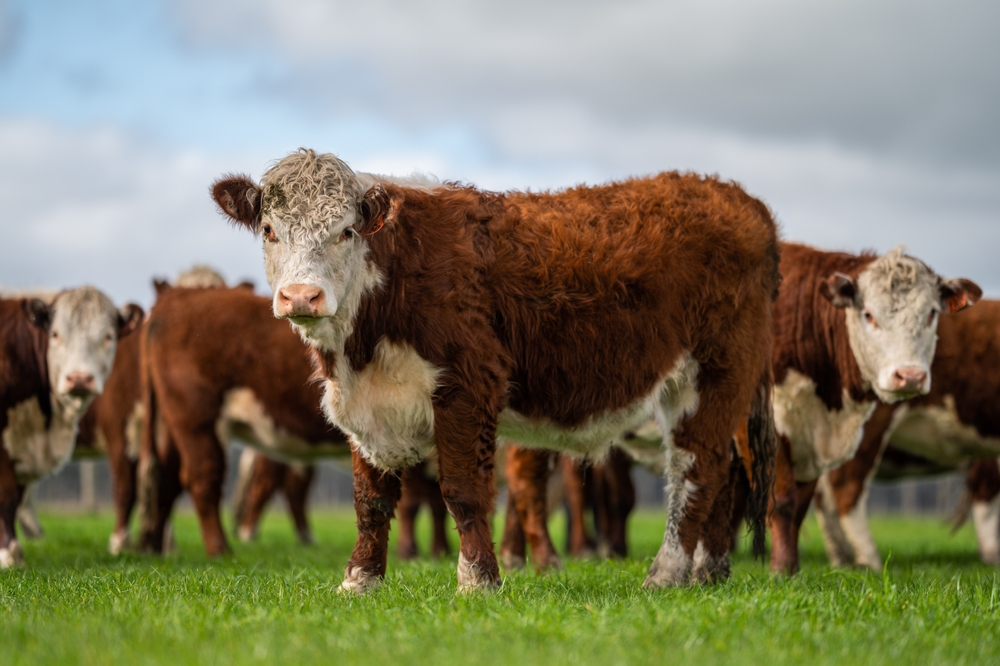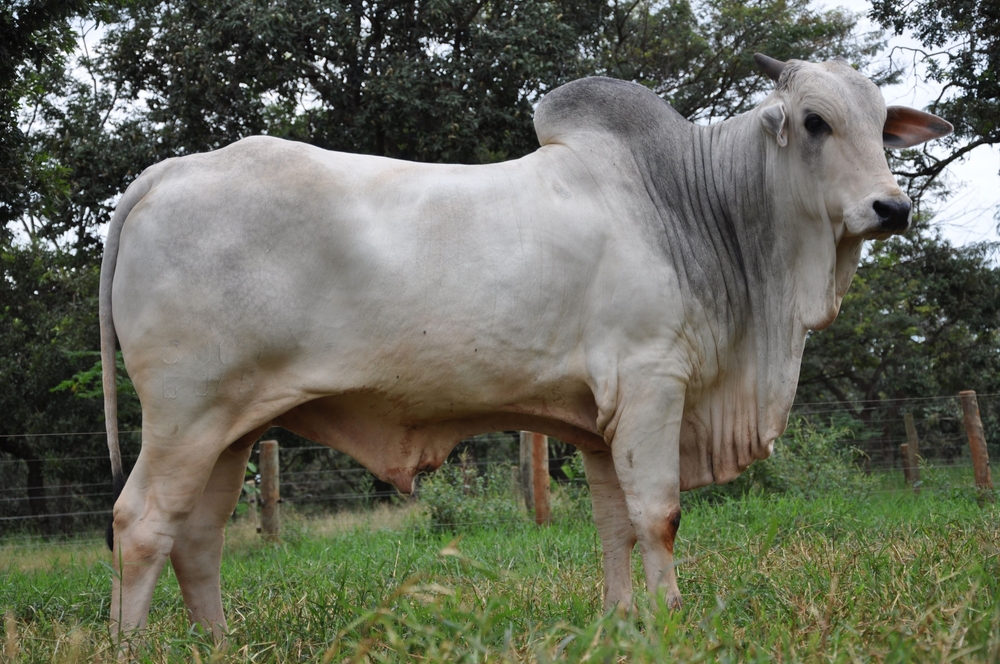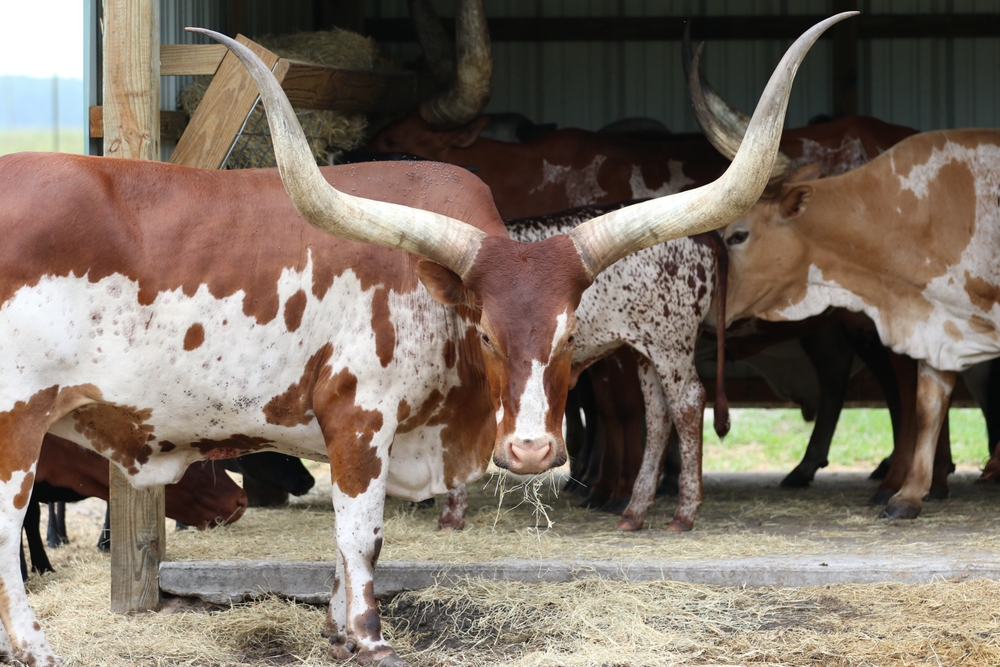The Highland is a breed of domestic cattle (Bos taurus), closely related to other British heritage beef breeds such as the Shorthorn and Hereford, sharing similar temperate-climate adaptations but with superior cold-weather resilience.
About
The Highland (Bos taurus) is a hardy, long-haired cattle breed from the rugged Scottish Highlands and belongs to the family Bovidae, which also includes bison, buffalo, antelope, and goats. With origins tracing back centuries, the Highland is one of the oldest registered cattle breeds, first recorded in the late 19th century. It was developed to survive in the harsh, wet, and windy climate of northern Scotland, thriving on sparse forage and enduring cold winters with ease.
Highlands are instantly recognizable for their thick, shaggy double coat—an outer layer of long, wavy hair that sheds rain and snow, and a soft undercoat for insulation. Coat colors vary from red, yellow, and black to dun, brindle, and white. Their sweeping, wide horns serve both for defense and foraging, as they can dig through snow to reach vegetation. Mature bulls weigh 725–800 kg (1,600–1,800 lbs), while cows range from 450–500 kg (1,000–1,100 lbs).
Known for their hardiness and low-maintenance nature, Highlands can thrive on rough pasture and minimal supplemental feeding. Their calm temperament makes them easy to handle, and their adaptability allows them to live comfortably in climates from arctic cold to temperate grasslands.
Highland beef is lean, flavorful, and naturally low in cholesterol, often commanding premium prices in niche markets. Despite their rugged build, Highland cattle mature slowly, which contributes to the tenderness of their meat. While primarily raised for beef, they are also valued for conservation grazing, helping maintain natural landscapes by browsing on shrubs and coarse grasses.
Today, Highland cattle are found worldwide, appreciated for their striking appearance, gentle demeanor, and remarkable ability to prosper in environments where other cattle might struggle. They remain a cultural icon of Scotland and a symbol of resilience in livestock breeding.
Physical Characteristics
Highland cattle are a hardy Scottish beef breed known for their distinctive long hair and rugged build:
-
Coat: Long, thick, double-layered hair—an outer coat of long, coarse guard hairs and a soft, insulating undercoat. Coat colors include red (most common), yellow, dun, black, brindle, and silver.
-
Head: Broad forehead with a long forelock (often called a “fringe” or “bangs”) that helps shield the eyes from wind, rain, and insects.
-
Horns: Both males and females have long, sweeping horns—males’ horns are thicker and curve forward, while females’ are slimmer and curve upward.
-
Body: Compact, deep-bodied frame with strong bone structure and well-sprung ribs for surviving harsh climates.
-
Skin: Thick, loose skin that adds to weather resistance.
-
Tail: Long, with a full tuft of hair at the end.
Size:
-
Length (Body): Approximately 6.5 to 8 ft (2.0 to 2.4 m) from head to rump.
-
Shoulder Height: Around 3.8 to 4.5 ft (1.16 to 1.37 m).
Weight:
-
Adult Female (Cow): Typically 1,000 to 1,300 lbs (455 to 590 kg).
-
Adult Male (Bull): Usually 1,500 to 1,800 lbs (680 to 820 kg).
Highland cattle’s long coat, sturdy build, and distinctive horns make them exceptionally well-suited to cold, wet, and windy environments, particularly in the Scottish Highlands where the breed originated.
Reproduction
Highland cattle are known for strong fertility, calving ease, and excellent maternal instincts—traits shaped by centuries of breeding in harsh environments:
-
Mating and Breeding Season:
-
Can breed year-round, but in traditional systems calving is often timed for spring to align with improved pasture growth.
-
Both natural service and artificial insemination (AI) are used, though many heritage and pasture herds rely on natural breeding.
-
-
Gestation:
-
The gestation period averages 283 days (about 9 months), similar to most beef breeds.
-
-
Birth and Calving:
-
Typically produce a single calf; twins are rare.
-
Calving ease is a hallmark of the breed, with low birth weights and well-shaped calves reducing the risk of complications.
-
-
Calf Characteristics at Birth:
-
Calves generally weigh 50 to 75 lbs (23 to 34 kg).
-
Born with a thick, woolly coat that provides insulation in cold weather.
-
-
Maternal Care:
-
Cows are highly protective and attentive to their calves, with strong milk production for a beef breed.
-
Calves are generally weaned at 6 to 8 months of age.
-
-
Maturity and Breeding Readiness:
-
Heifers reach breeding age around 18 months, though some may be bred at 15–16 months in good condition.
-
Bulls typically begin breeding successfully at 18 months to 2 years.
-
Highland cattle’s fertility, calving ease, and mothering ability make them ideal for extensive, low-intervention beef systems, especially in rugged or remote grazing environments.
Lifespan
Lifespan
-
In Extensive or Pasture-Based Systems:
Highland cattle often live 15 to 20 years, with many cows remaining productive breeders into their mid to late teens. -
In Ideal or Low-Stress Conditions:
With optimal nutrition, veterinary care, and low production pressure, some Highlands can live over 20 years, which is unusually long for beef breeds.
Threats to Longevity:
-
Nutritional Deficiency: Poor-quality pasture or prolonged harsh winters without supplemental feed can reduce lifespan.
-
Parasites & Disease: While naturally hardy, Highlands are still susceptible to internal parasites and certain cattle diseases if unmanaged.
-
Environmental Stress: Although extremely cold-hardy, persistent wet and muddy conditions can contribute to hoof issues.
-
Predation (Calves): In some regions, calves may be vulnerable to predators such as wolves, coyotes, or large cats.
Highland cattle’s exceptional hardiness, longevity, and ability to thrive in poor grazing conditions make them one of the most sustainable beef breeds for rugged climates.
Eating Habits
Highland cattle are efficient grazers and browsers, adapted to thrive on sparse, low-quality forage in harsh environments:
-
Primary Diet:
-
Graze on native grasses such as fescue, timothy, and bentgrass.
-
Will also browse shrubs, heather, gorse, and woody plants, giving them an advantage in marginal lands where other cattle may not thrive.
-
-
Winter Feeding:
-
In cold climates, subsist on hay or silage when pastures are snow-covered or dormant.
-
Can utilize coarse forage and roughage more effectively than many beef breeds due to efficient digestion.
-
-
Nutritional Balance:
-
Require a balanced intake of protein, fiber, and minerals to maintain health and productivity.
-
Often supplemented with mineral licks in extensive grazing systems.
-
-
Water Needs:
-
Need access to fresh water daily; intake varies with weather, forage moisture, and physiological demands (e.g., lactation).
-
-
Feeding Behavior:
-
Spend long periods grazing and foraging, often covering large areas.
-
Can thrive on land unsuitable for intensive agriculture, reducing feed costs for producers.
-
Highland cattle’s ability to thrive on coarse vegetation and maintain good condition in poor grazing environments makes them a cost-effective and sustainable choice for extensive beef production systems.
Uniqueness
The Highland (Bos taurus) is one of the oldest and most distinctive cattle breeds in the world, with traits shaped by centuries in the rugged Scottish Highlands:
-
Double Coat: Possess a thick, insulating undercoat beneath long, coarse guard hairs—providing exceptional cold and wet weather resistance.
-
Iconic Horns: Both males and females have long, sweeping horns used for protection, foraging through snow, and breed identification.
-
Cold-Weather Champions: Among the most cold-hardy cattle breeds, capable of thriving in subzero temperatures and high-wind conditions without shelter.
-
Efficient Grazers: Can subsist on poor-quality forage, including brush and shrubs, making them ideal for marginal lands and conservation grazing.
-
Long Lifespan & Productivity: Often remain healthy and productive breeders into their late teens, outliving most other beef breeds.
-
Distinctive Appearance: Their long hair, broad forelock (“fringe”), and variety of coat colors—red, black, yellow, dun, brindle, and silver—make them visually striking.
-
Heritage & History: A breed with over 1,000 years of history, deeply tied to Scottish culture and pastoral traditions.
Highland cattle’s combination of beauty, hardiness, and adaptability makes them not only a functional beef breed but also a cultural and agricultural icon.
Be the First to Share Photos of This Species.
FAQ’s
1. What is the closest species to the Highland?
2. How does the Highland compare to other cattle breeds?
Highland cattle excel in cold tolerance, forage efficiency, and longevity compared to most beef breeds. While they produce leaner meat with less marbling than breeds like Angus or Wagyu, their beef is prized for its tenderness and flavor. They are also more suited to rugged, marginal grazing lands where other breeds may struggle.
3. What national parks provide the best chances to see a Highland?
Although domesticated, Highlands are often used in conservation grazing programs and can be seen in and around:
-
Cairngorms National Park (Scotland) – grazing in upland pastures and moorlands.
-
Loch Lomond & The Trossachs National Park (Scotland) – traditional Highland herds in scenic glens.
-
Great Smoky Mountains National Park area (Tennessee/North Carolina, USA) – nearby heritage farms and agritourism operations feature Highlands.



































































